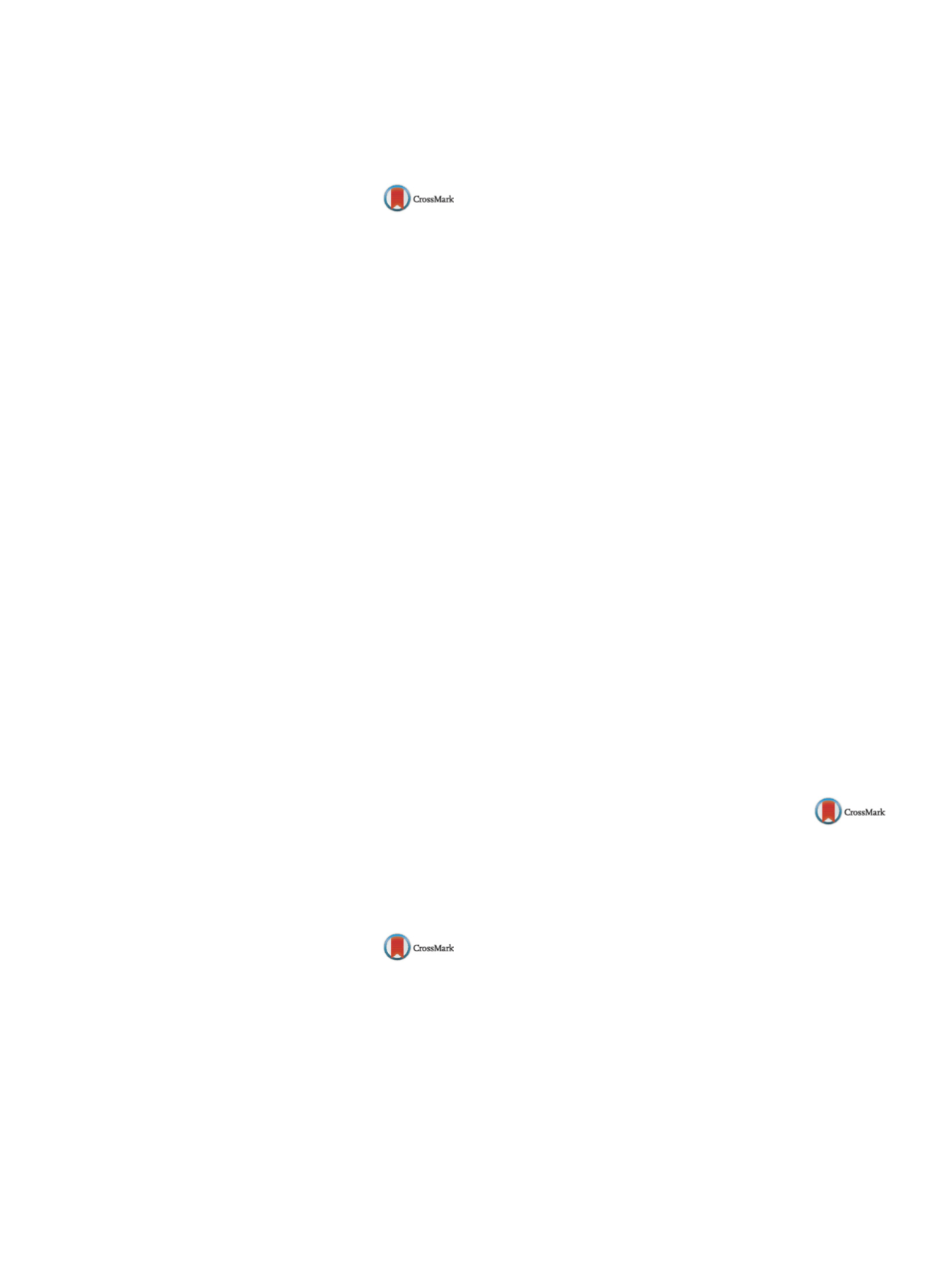

S104
25th European Congress of Psychiatry / European Psychiatry 41S (2017) S69–S105
Disclosure of interest
The authors have not supplied their decla-
ration of competing interest.
http://dx.doi.org/10.1016/j.eurpsy.2017.01.320O099
A pilot project exploring the utility
and acceptability of a socially-assistive
robot in an assessment unit for people
with neuropsychiatric symptoms
S. Loi
1 ,∗
, R. Khosla
2, K. Nguyen
2, N. Lautenschlager
1,
D. Velakoulis
11
University of Melbourne, Psychiatry, Parkville, Australia
2
Latrobe University, Research Centre for Computers Communication
and Innovation, Bundoora, Australia
∗
Corresponding author.
Objectives
Socially-assistive robots have been used with older
adults with cognitive impairment in residential care, and found
to improve mood and well-being. However, there is little known
about the potential benefits in adults with other neuropsychiatric
symptoms.
Aims
The aim of this project was explore the utility and accept-
ability of a socially-assistive robot in engaging adults with a variety
of neuropsychiatric symptoms.
Methods
Betty, a socially-assistive robot was installed in a unit
which specialises in the assessment and diagnosis of adults pre-
senting with neuropsychiatric symptoms. She is 39 cm tall, has a
baby-face appearance and has the ability to engage individuals
through personalised serviceswhich can be programmed according
to individuals’ preferences. These include singing songs and play-
ing games. Training for the nursing staff who were responsible for
incorporating Betty into the unit activities was provided. The fre-
quency, duration and type of activity which Betty was involved in
was recorded. Patients admitted who could provide informed con-
sent were able to be included in the project. These participants
completed pre- and post-questionnaires.
Results
Eight patients (mean age 54.4 years, SD 13.6) who had
diagnoses ranging fromdepression and schizophrenia participated.
Types of activities included singing songs, playing Bingo and read-
ing the news. Participants reported that they were comfortable
with Betty and did not feel concerned in her presence. They enjoyed
interacting with her.
Conclusions
This pilot project demonstrated that participants
found Betty to be acceptable and she was useful in engaging them
in activities. Future directions would involve larger sample sizes
and different settings.
Disclosure of interest
The authors have not supplied their decla-
ration of competing interest.
http://dx.doi.org/10.1016/j.eurpsy.2017.01.321O100
Risperidone-treated children and
adolescents with behavioral
disorders: Do drug dose and patients’
gender and age relate to drug and
metabolite plasma levels?
D. Piacentino
1 , 2 ,∗
, M. Grözinger
3, A. Saria
4, F. Scolati
5,
D. Arcangeli
6, P. Girardi
1, M. Pompili
1, A. Conca
2 , 61
NESMOS Department (Neurosciences, Mental Health, and Sensory
Organs), Sapienza University of Rome, School of Medicine and
Psychology, Sant’Andrea Hospital, Rome, Italy
2
Department of Psychiatry, San Maurizio Hospital, Sanitary Agency
of South Tyrol, Bolzano, Italy
3
Klinik für Psychiatrie, Psychotherapie und Psychosomatik, Uniklinik
RWTH Aachen, Aachen, Germaany
4
Experimental Psychiatry Unit, Medizinische Universität Innsbruck,
Innsbruck, Austria
5
Handicap and Psychological Distress Service, Social Services Agency
of South Tyrol, Bolzano, Italy
6
Provincial Service of Developmental Psychiatry and Psychotherapy,
Sanitary Agency of South Tyrol, Bolzano, Italy
∗
Corresponding author at: Corresponding author.
Introduction
Behavioral disorders, such as conduct disorder,
influence choice of treatment and its outcome. Less is known about
other variables that may have an influence.
Objectives/Aims
We aimed to measure the parent drug and
metabolite plasma levels in risperidone-treated children and ado-
lescents with behavioral disorders and investigate the role of drug
dose and patients’ gender and age.
Methods
We recruited 115 children/adolescents with DSM-5
behavioral disorders (females = 24; age range: 5–18 years) at the
Departments of Psychiatry of the Hospitals of Bolzano, Italy, and
Innsbruck, Austria. We measured risperidone and its metabolite
9-hydroxyrisperidone plasma levels and the parent drug-to-
metabolite ratio in the plasma of all patients by using LC-MS/MS.
A subsample of 15 patients had their risperidone doses measured
daily. We compared risperidone and 9-hydroxyrisperidone plasma
levels, as well as risperidone/9-hydroxyrisperidone ratio, in males
vs. females and in younger (
≤
14 years) vs. older (15–18 years)
patients by using Mann-Whitney U test. We fitted linear models
for the variables “age” and “daily risperidone dose” by using log-
transformation, regression analysis and applying the R2 statistic.
Results
Females had significantly higher median 9-
hydroxyrisperidone plasma levels (
P
= 0.000). Younger patients
had a slightly lower median risperidone/9-hydroxyrisperidone
ratio (
P
= 0.052). At the regression analysis, daily risperidone doses
and metabolite, rather than parent drug–plasma levels were
correlated (R2 = 0.35).
Conclusions
Gender is significantly associatedwithplasma levels,
with females being slower metabolizers than males. Concerning
age, younger patients seem to be rapid metabolizers, possibly due
to a higher activity of CYP2D6. R2 suggests a clear-cut elimination
of the metabolite.
Disclosure of interest
The authors have not supplied their decla-
ration of competing interest.
http://dx.doi.org/10.1016/j.eurpsy.2017.01.322O101
Grey matter volume patterns in
thalamic nuclei are associated with
schizotypy in healthy subjects
P. Di Carlo
1 ,∗
, G . Pergola
1 , M.Cariello
1 , A. Bonvino
1 ,M. Mancini
1 , P. Taurisano
1 , G.Caforio
2 , A.Bertolino
1 , G.Blasi
11
University of Bari “Aldo Moro”, Department of Basic Medical
Science, Neuroscience and Sense Organs, Bari, Italy
2
Bari University Hospital, Psychiatry Unit, Bari, Italy
∗
Corresponding author.
Introduction
Schizotypy refers to a set of temporally stable traits
that are observed in the general population and that resemble,
in attenuated form, the symptoms of schizophrenia. In a previ-
ous work, we identified volumetric patterns in thalamic subregions
which were associated with disease status, and trained a random
forests classifier, accounting for such thalamic volumetric pat-
terns, that discriminated healthy controls (HC) from patients with
schizophrenia (SCZ) (81% accuracy)
[1] .Objectives
i) to assess performance of random forests classifier
developed by Pergola and coworkers
[1] , in an independent sam-
ple of healthy subjects; ii) to test whether false positives (FP), i.e.
HC classified as SCZ based on such classifier would be associated
with greater schizotypy compared with true negatives (TN), i.e. HC
classified as such.


















